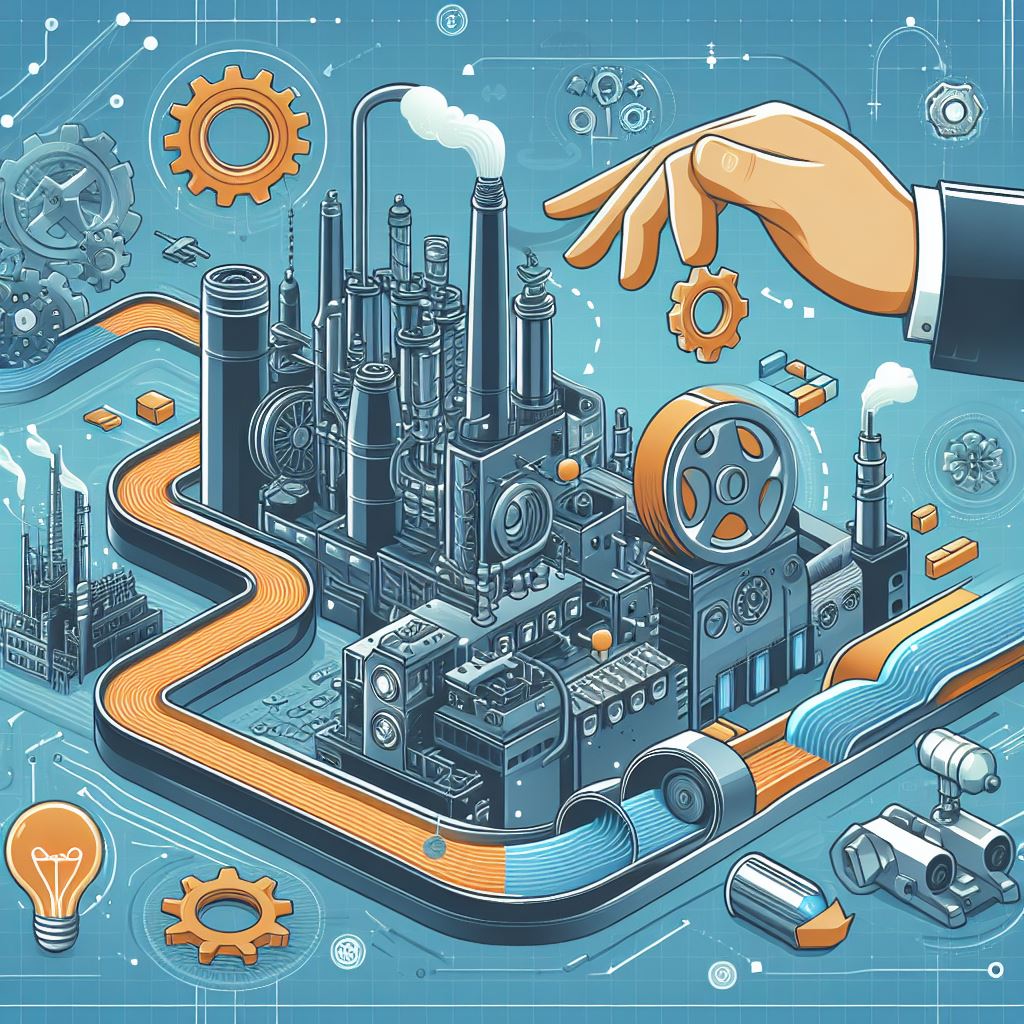In today’s competitive manufacturing landscape, efficiency reigns supreme. Companies constantly seek ways to optimize production processes, minimize waste, and maximize output. Enter continuous flow manufacturing, a revolutionary approach that streamlines production and unlocks a treasure trove of benefits.
Advantages of Continuous Flow in Manufacturing
Continuous flow manufacturing stands in stark contrast to traditional batch processing. Instead of producing items in discrete batches, materials seamlessly progress through interconnected stages without interruption. This uninterrupted flow eliminates the downtime associated with setup and changeovers between batches, significantly boosting overall production efficiency.
Enhanced Product Consistency
One of the most compelling advantages of continuous flow in manufacturing is its positive impact on product consistency. Batch processing can introduce inconsistencies between batches due to slight variations in raw materials, equipment settings, or operator intervention. In a continuous flow system, however, conditions remain constant throughout the production run, resulting in a uniform product that consistently meets quality specifications.
Reduced Lead Times
Faster turnaround times are another hallmark of continuous-flow manufacturing. By eliminating batch processing delays, products move swiftly through the production line, reaching the finished goods stage much quicker. This translates to shorter lead times, allowing manufacturers to respond more effectively to customer demands and market fluctuations.
Minimized Inventory Costs
Continuous flow manufacturing also boasts significant advantages in terms of inventory management. Batch processing often necessitates holding large stockpiles of raw materials and work-in-progress inventory. A constant flow system, on the other hand, requires a smaller inventory footprint. Materials are introduced into the production line just in time, minimizing storage costs and the risk of obsolescence.
Lower Labor Costs
Continuous flow manufacturing often necessitates a higher degree of automation compared to batch processing. While this may require an initial investment in automation technology, the long-term benefits are substantial. Automated systems reduce the need for manual labor, leading to lower overall labor costs. Additionally, automation promotes greater consistency and reduces the risk of human error.
Improved Safety
Safety is a paramount concern in any manufacturing environment. Continuous-flow manufacturing offers inherent safety advantages. Automated systems minimize worker exposure to hazardous materials or processes. Furthermore, the continuous flow of materials through the production line reduces the risk of accidents associated with manual handling.
Continuous Improvement
Continuous flow manufacturing fosters a culture of constant improvement. The process’s inherent simplicity and streamlined nature make it easier to identify and address bottlenecks or inefficiencies. Real-time data from automated systems provides valuable insights for optimizing production parameters and enhancing efficiency.
Challenges and Considerations
While continuous flow manufacturing offers many advantages, it has its challenges. Here are some factors to consider:
- Initial Investment: Implementing a continuous flow system may necessitate upfront equipment upgrades and process redesign costs.
- Production Flexibility: Continuous flow systems are often optimized for specific product lines. Adapting the system to accommodate new products can be more complex than batch processing.
- Maintenance Requirements: Automated systems within a continuous flow line require regular maintenance to ensure optimal performance. A robust maintenance plan is crucial.
Success Stories
Highlighting real-world examples of successful continuous flow implementations can be highly persuasive. Conduct research to find case studies of companies in similar industries that have reaped the benefits of constant flow. Share quantifiable improvements in their efficiency, lead times, or cost savings.
The Future of Continuous Flow
Manufacturing is on the cusp of a technological revolution. Emerging technologies like artificial intelligence, machine learning, and the Industrial Internet of Things (IIoT) hold immense potential for further optimizing continuous flow processes. Explore how these advancements can be leveraged to achieve even greater levels of automation, real-time process control, and predictive maintenance.
By incorporating these elements, you can craft a comprehensive narrative that not only praises the advantages of continuous flow manufacturing but also acknowledges its limitations and paves the way for future discussions on its evolution.
Conclusion
Continuous flow manufacturing presents a compelling proposition for manufacturers seeking to elevate their production processes. The advantages are undeniable, from enhanced efficiency and product consistency to reduced costs and improved safety. By embracing continuous flow, manufacturers can unlock a new level of operational excellence and gain a significant competitive edge.
FAQs
Is continuous flow manufacturing suitable for all products?
While continuous flow excels in the high-volume production of standardized products, there may be better options for low-volume or highly customized items.
Can AmrepMexico help me implement continuous flow manufacturing?
AmrepMexico possesses extensive experience in optimizing manufacturing processes. Our expert team can assess your needs and develop a customized continuous flow implementation plan.
Is continuous flow manufacturing a good fit for every product?
A: While continuous flow excels in the high-volume production of standardized items, it might be better for low-volume or highly customized products. Batch processing may offer more flexibility in these scenarios.
Can AmrepMexico assist me with implementing continuous flow manufacturing?
A: Absolutely! AmrepMexico boasts extensive experience in optimizing manufacturing processes. Our team of experts can evaluate your specific needs and develop a customized plan to implement continuous flow in your facility.
